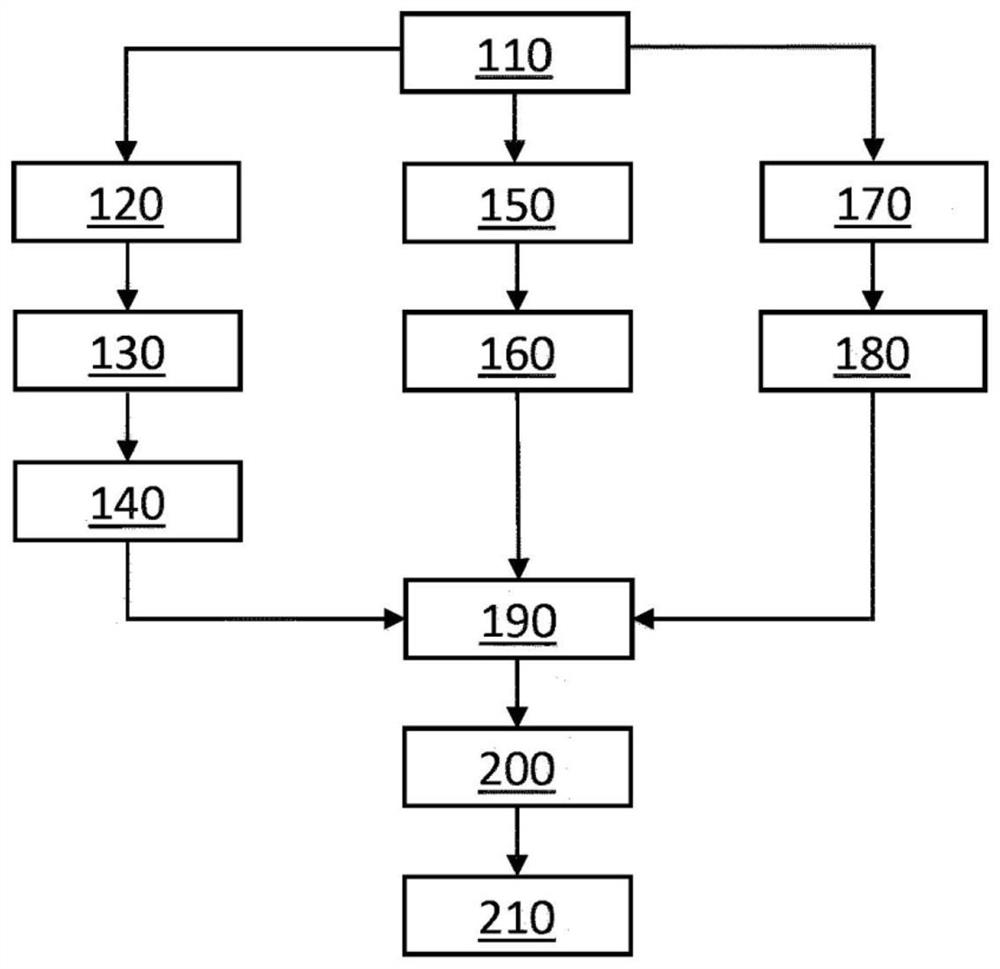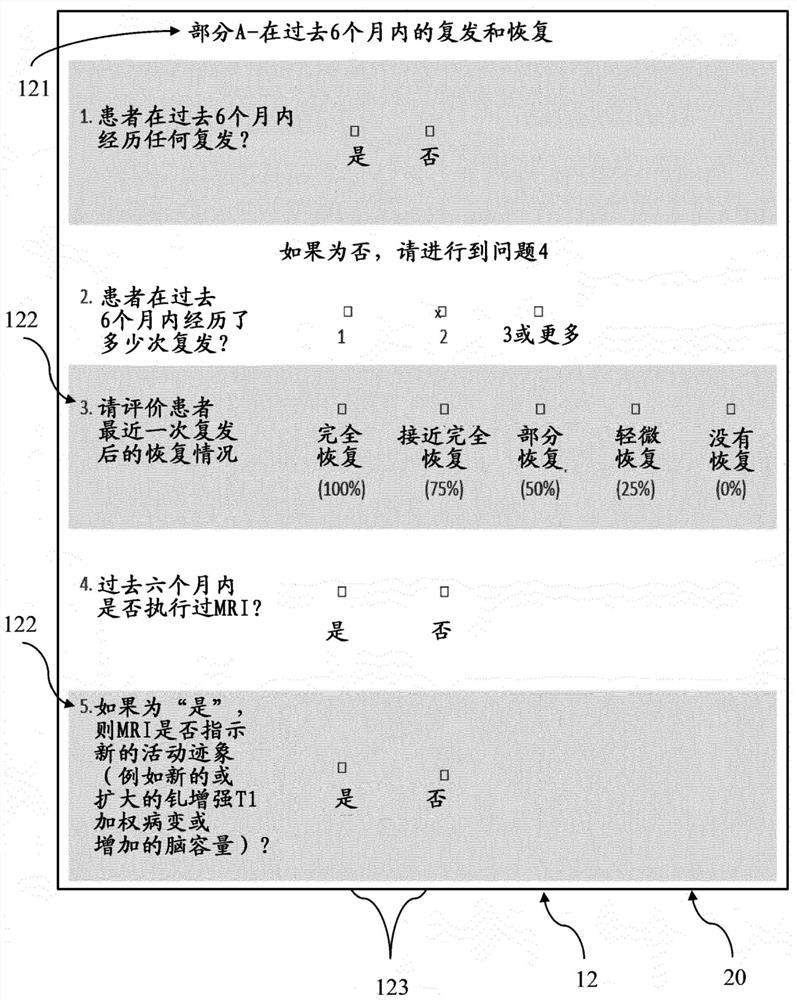Technique for determining a state of multiple sclerosis in a patient
A multiple sclerosis and status technology, applied in the direction of patient-specific data, medical automated diagnosis, special data processing applications, etc., to achieve the effect of eliminating subjectivity, fast and simple use, and good long-term results
- Summary
- Abstract
- Description
- Claims
- Application Information
AI Technical Summary
Problems solved by technology
Method used
Image
Examples
example 1
[0226] Table 4A, Table 5A, and Table 6A provide the weights for items Q1–Q20 and the scores for the corresponding responses to each of the items Q1–Q20. Table 5A further includes weights for the sub-items of each of the items Q6-Q15 and scores for the corresponding responses to each of the sub-items. Table 4A, Table 5A, and Table 6A correspond to Table 4, Table 5, and Table 6, respectively. Optionally, Table 4A, Table 5A and Table 6A show the maximum possible score for each item and sub-item (if applicable) in the item. For projects with sub-projects—the maximum possible score for an project is the sum of the maximum possible scores for the sub-projects in the project. The largest possible number of groups is also indicated, assuming that the first group includes all of Q1 to Q5, the second group includes all of Q6 to Q15, and the third group includes all of Q16 to Q20.
[0227] Table 4A – Group 1 – Items, Item Weights, Corresponding Scheduled Responses and Response Scores ...
example 2
[0257] In this example, the EDSS score and the age score are determined together and may be referred to as the "clinical score". Tables 4B, 5B, and 6A (as provided in Example 1 above) provide the weights for items Q1-Q20 in this example and the scores for the corresponding responses to each of the items Q1-Q20.
[0258] Table 4B – Group 1 – Items, Item Weights, Corresponding Scheduled Responses and Response Scores
[0259]
[0260] Table 5B - Second Group - Items, Item Weights, Corresponding Predetermined Responses and Response Scores.
[0261]
[0262]
[0263] Table 7B shows the weights and scores for EDSS, T25FW and age.
[0264] Table 7B – Clinical Score – (EDSS and / or T25FW) and Age
[0265]
[0266] Calculation of the total score:
[0267] When all items Q1-Q20 are included in the first, second, and third groups, the item score for each item Q1-Q20 is obtained by multiplying the item weight by the corresponding response selected for that item to determine...
example 2、2A
[0297] Examples 2, 2A and 2B – the first (ie, Example 2) using Table 7B and the second (ie, Examples 2A and 2B) using Table 7C, provide how to determine or calculate the first set of scores, Examples of each of the binary and tertiary fractions are as explained above.
PUM
 Login to View More
Login to View More Abstract
Description
Claims
Application Information
 Login to View More
Login to View More - R&D
- Intellectual Property
- Life Sciences
- Materials
- Tech Scout
- Unparalleled Data Quality
- Higher Quality Content
- 60% Fewer Hallucinations
Browse by: Latest US Patents, China's latest patents, Technical Efficacy Thesaurus, Application Domain, Technology Topic, Popular Technical Reports.
© 2025 PatSnap. All rights reserved.Legal|Privacy policy|Modern Slavery Act Transparency Statement|Sitemap|About US| Contact US: help@patsnap.com



